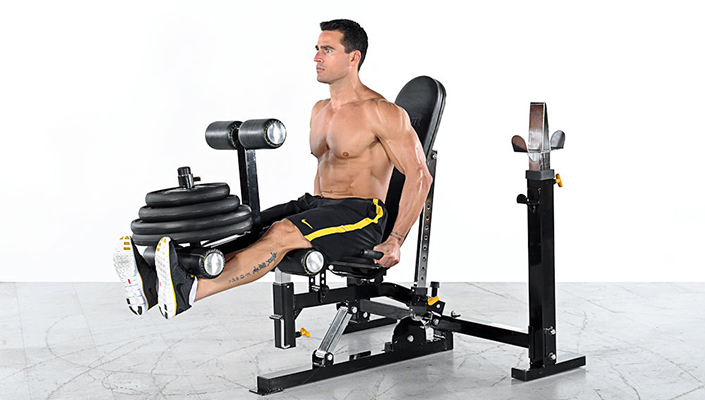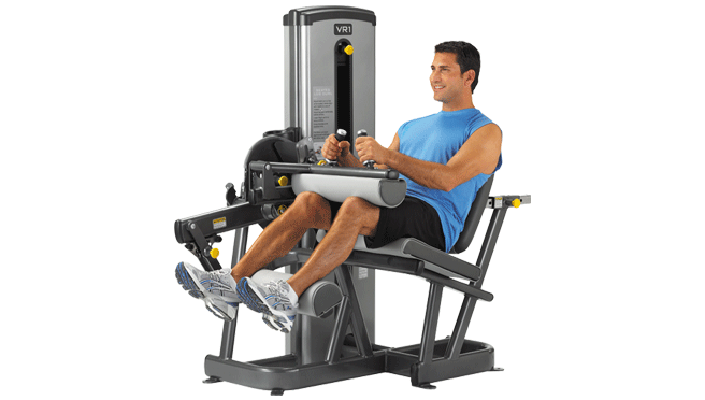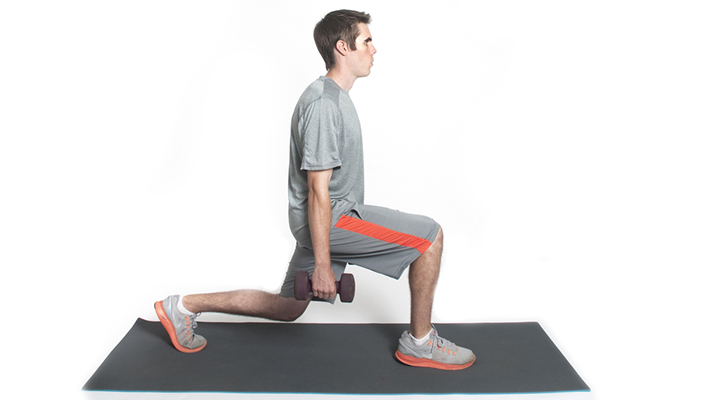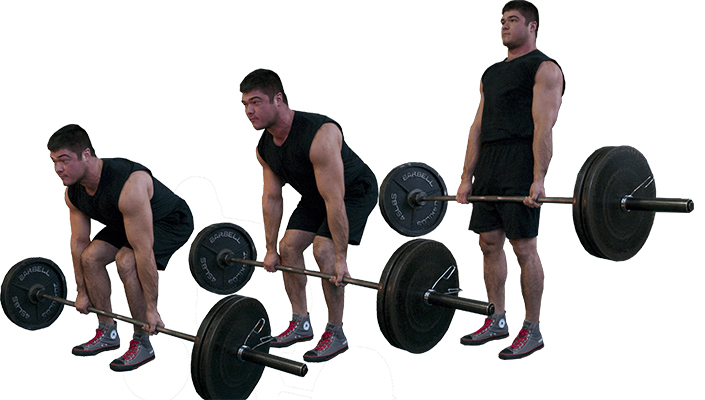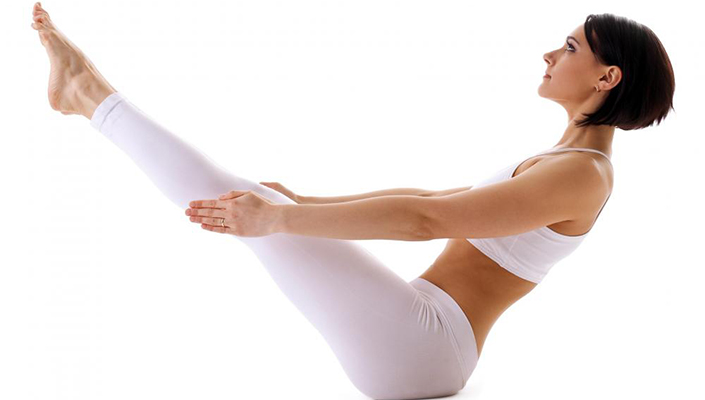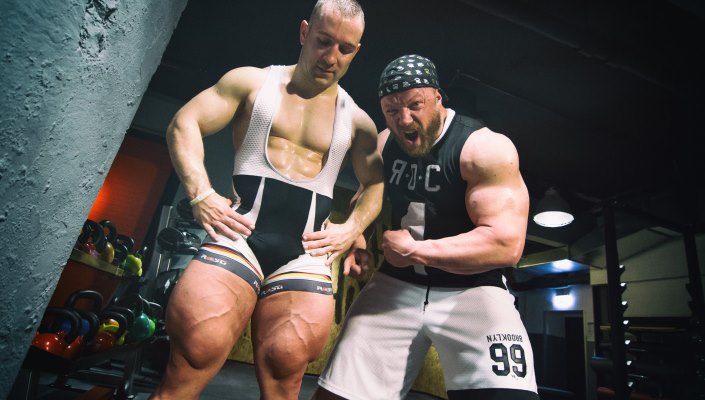
Athletes involved in sports that require serious amounts of power, such as football, rugby, and ice hockey, know that to maintain their strength they need to keep up their work in the gym throughout the season. However, cyclists have tended to stick to the formula of strength training during the off-season and restricting their workouts during the race season to training that can be done on the bike. Lately, though, some successful riders have been challenging this theory by keeping up a strength-training program all year round.

image: highlandtraning.net
Mike Schultz, a certified strength and conditioning specialist with the National Strength and Conditioning Association (NSCA), says that maintaining at least one gym session per week is vital to prevent losing the strength gains that were so painstakingly achieved over winter. He is quick to point out that while the intensity of strength training sessions should remain high, these workouts should be tailored to fit in with actual riding rather than the other way around.
"The most specific strength gains you can make are on the bike, so it is important to be conservative with strength training at this time so as not to over train the legs in any way or take away from your training on the bike. This is also a great time of year to make use of body weight exercises such as planks, trunk twists, and abdominal exercises. That will allow you to maintain good upper body and core strength".
"In-season maintenance training need not be extensive or exhaustive. Most cyclists simply do not have the time or the energy to keep up full time resistance training, so it would be foolish to attempt to maintain comprehensive strength training while traveling and racing nearly fulltime. However, an abbreviated, but intensive program, once or twice a week for a short period of time, can easily maintain or slow the loss of strength and power." Schultz also points out that summer is not the time to begin a strength program: "Start and build in winter, maintain over summer."
So what are the best exercises to do? We spoke to four top pro riders to get some ideas.
Leg Extensions
Two-time Giro d'Italia champion Ivan Basso is a big fan of strength training and attributes much of his success to the power and muscular endurance he developed over a decade of lifting weights.
"I love the TRX for a total body workout and usually take a TRX with me whenever I travel," he said. "But for pure strength, for building up the muscles in the legs and lower back, I think nothing beats the leg curl and leg extension. I would always do 3 sets of 20, using about 60-70% of my maximum weight. During the off-season I would do this workout 2 or 3 times per week, then I'd bring it down to once a week during the racing season, but I always made an effort to maintain the intensity of each training session, trying to really push myself."
How to do it:
- For this exercise you will need to use a leg extension machine. First choose your weight and sit on the machine with your legs under the pad (feet pointed forward) and the hands holding the side bars. This will be your starting position. You will need to adjust the pad so that it falls on top of your lower leg (just above your feet). Also, make sure that your legs form a 90-degree angle between the lower and upper leg. If the angle is less than 90-degrees then that means the knee is over the toes which in turn creates undue stress at the knee joint. If the machine is designed that way, either look for another machine or just make sure that when you start executing the exercise you stop going down once you hit the 90-degree angle.
- Using your quadriceps, extend your legs to the maximum as you exhale. Ensure that the rest of the body remains stationary on the seat. Pause a second on the contracted position.
- Slowly lower the weight back to the original position as you inhale, ensuring that you do not go past the 90-degree angle limit.
- Repeat for the recommended amount of times.
Seated Leg Curls
How to do it:
- Adjust the machine lever to fit your height and sit on the machine with your back against the back support pad.
- Place the back of lower leg on top of padded lever (just a few inches under the calves) and secure the lap pad against your thighs, just above the knees. Then grasp the side handles on the machine as you point your toes straight (or you can also use any of the other two stances) and ensure that the legs are fully straight right in front of you. This will be your starting position.
- As you exhale, pull the machine lever as far as possible to the back of your thighs by flexing at the knees. Keep your torso stationary at all times. Hold the contracted position for a second.
- Slowly return to the starting position as you breathe in.
- Repeat for the recommended amount of repetitions.
Dumbbell Lunge
Recently retired pro rider American Ted King, who finished his career in 2015 with the Cannondale-Garmin team, is another rider who believes it's important to keep up a strength training regiment all year round, but unlike Basso he prefers to stay away from machines and use free weights to build strength, power, and endurance.
"I found that reverse lunges using a pair of dumbbells gave me great strength gains in the glutes and quads," said King, "and never caused me any knee pain, which a traditional forward lunge can do." King completes 3 sets of 15 lunges on each leg, during both the off-season and throughout his racing calendar.
How to do it:
- Stand with your torso upright holding two dumbbells in your hands by your sides. This will be your starting position.
- Step backward with your right leg around two feet or so from the left foot and lower your upper body down, while keeping the torso upright and maintaining balance. Inhale as you go down. As in the other exercises, do not allow your knee to go forward beyond your toes as you come down, as this will put undue stress on the knee joint. Make sure that you keep your front shin perpendicular to the ground. Keep the torso upright during the lunge; flexible hip flexors are important. A long lunge emphasizes the Gluteus Maximus; a short lunge emphasizes Quadriceps.
- Push up and go back to the starting position as you exhale. Use the ball of your feet to push in order to accentuate the quadriceps. To focus on the glutes, press with your heels.
- Now repeat with the opposite leg.
Deadlift
World Cycling League superstar Nate Koch trains in the gym all year round, building his strength program toward peaking for certain races.
"My favorite exercises are squat jumps, trap bar deadlifts, and heavy squats. I think all riders can benefit from this type of training, although the program designed for a track rider like me would need to be adapted a bit to suit a road rider or mountain biker."
How to do it:
- Grasp the bar. You should be close enough to reach the barbell and grasp it with your hands slightly more than shoulder width apart, outside of your legs. You should keep your arms straight. Although you can use any grip you are comfortable with, the mixed grip is recommended; grasp the bar with one palm facing you and the other facing away from you. This tends to stabilize the bar, as it may roll out of your hands if both palms are facing the same direction, especially if you are a beginner or have a poor grip.
- Set your hips and legs. Put the barbell over the middle of your feet. Bend down with your butt back until your shins hit the bar. Keep the lower part of your legs mostly vertical.
- Straighten your back and keep your head in line with your spine.
- Lift the bar. Stand up by raising your hips and shoulders at the same rate and maintaining a flat back. Keep your abs tight during the whole lift. You should lift the bar straight up vertically and close to your body, thinking of it as pushing the floor away. Come to a standing position with upright posture and your shoulders pulled back. Allow the bar to hang in front of your hips; do not try to lift it any higher.
- Lower the bar. Keeping your back straight, return the bar to the starting position in a controlled manner. Push your butt out as if you are going to sit down in a chair, and keep your head up. Do not arch your back or curl your tailbone under.
RELATED: Top 10 tips to training well
Boat Pose
Marianne Vos, one of the true greats of women's cycling and famous for her gruelling training regiment, is a big believer in strength training, in particular anything involving the core.
"My all-time favorite is the Boat Pose. Every single muscle in your core is engaged for the Boat Pose and I try to do it at least 3 times every week." says the Dutch champion. Vos is a 3-time World Road Race Champion, 2-time World Track Champion, 2-time Olympic Gold Medalist, and 7-time World Cyclo-Cross Champion!
How to do it:
- Sit on the mat with your knees bent in front of you and your feet flat on the ground. Hold your arms, palms face up, in front of you so that your hands brush the sides of your knees.
- Lean back so that your torso is at a 45-degree angle to the floor. Slowly, lift your feet off of the ground as you straighten your legs, forming a "V" with your body.
- Use your core muscles to hold you in the position, and bring your arms slightly away from your body for more balance. Hold the pose for 15 -30 seconds.
With these great tips from some of the world's best pros you should be able to keep training through out your riding season. Remember to listen to your body and not to over-do it when lifting weights or working out. The goal is to maintain your strength in the gym and to build strength on your bike.
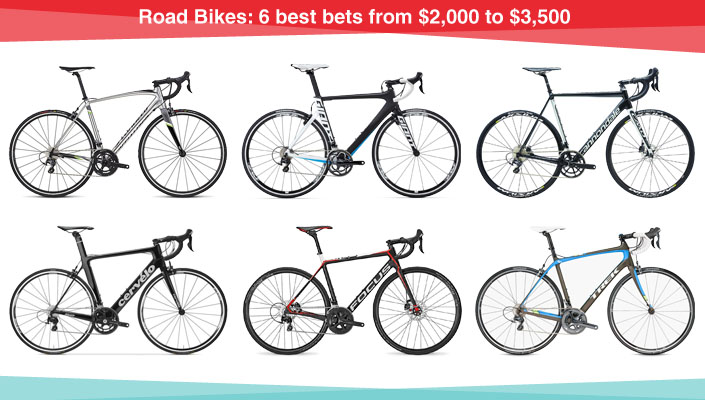
RELATED ARTICLE:
Road Bikes: 6 best bets from $2,000 to $3,500
Looking for a new entry to mid level road bike?BikeRoar has you covered with 6 of the best road bikes for... READ MORE

RELATED ARTICLE:
The Haute Route: A firsthand experience of what it takes to tackle the world's toughest ride
If you are looking for a new challenge, the Haute Route may be itBikeRoar first hand look at what it takes to ride the... READ MORE
